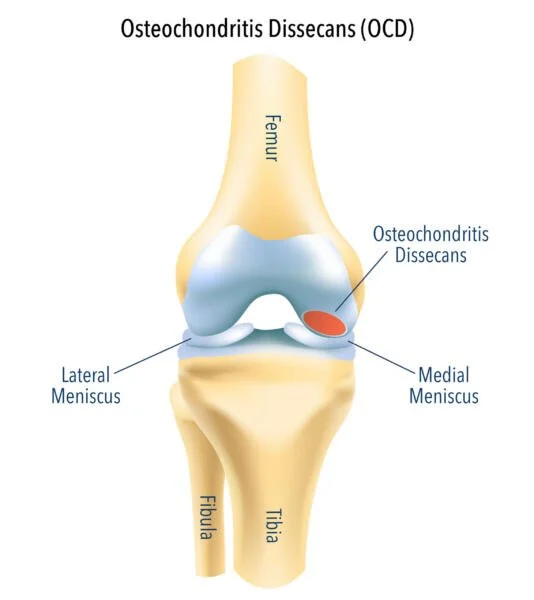Understanding OCD: The Impact on Young Athletes
This blog series is going to be breaking down pain and injury in young people and youth athletes. First up, Osteochondritis Dissecans best known as OCD.
Understanding OCD
Have you ever heard of Osteochondritis Dissecans?
OCD is a condition which develops in certain joints of young people. OCD affects the subchondral bone and its articular cartilage. That is in simple terms, the bone that is underneath the cartilage and the cartilage subsequently above the subchondral area.
This is common in the knee and elbow and occasionally in the ankle.
Causes of OCD
The cause of OCD commonly occurs from a loss of blood flow to the joint (localised avascular necrosis) which can cause the articular surfaces (cartilage) to soften. This may then cause the subchondral collage (bone below the cartilage) to collapse and form loose bodies in the knee (medial femoral condyle), elbow (capitellum) or ankle (medial talus). (1)
But how does this happen?
Well in most cases, the cause is idiopathic. Simply meaning, we don’t really know! But the most common risk factors involve increased and repetitive stress or load to the bone. (2)
Other risk factors may involve chemical changes at the surface located in the subchondral bone, genetic conditions, growth disorders, hereditary factors.
What sports cause the repetitive stress?
The most common sports that contribute to OCD of the knee are those involving alot of running and jumping, while throwing sports typically contribute to OCD of the elbow.
Symptoms and Diagnosis of OCD
Often patients with OCD will present with vague, diffuse pain and swelling over or around the joint affected. Pain is constant however is exacerbated by activity.
Mechanical symptoms such as limping, locking and clicking is common for knee related OCD and joint stiffness due to pain and swelling is common in all forms of OCD. (3)
Provisional diagnosis can be made by both a Subjective and Objective examination of the injured athlete. However, an X-Ray, MRI or both will be ordered as the gold standard to determine the presence, classify the stage and size of the lesion. (3)
Treatment and Rehab of OCD
It is important to seek professional and collaborative medical treatment by both a Physiotherapist and a Medical Doctor/Surgeon.
Early and mild diagnosis may respond well to immobilisation for a period of time. Furthermore, rest from aggravating activities for a period of three to six months may allow the lesion to heal spontaneously.
In many cases surgery is required to remove the loose bodies, with joint debridement also performed.
Both post operatively and after a period of immobilisation physiotherapy is important for progressive loading and strengthening for the respected injured joint.
Do you have any questions about OCD? Do you or your child/young athlete have an injury?
We have Sports & Exercise Physiotherapists ready to help ????
Call ☎️ 9873 2770
Book online: https://bookings.nookal.com/bookings/location/39XKS
Brukner, Peter. & Brukner, Peter. & Khan, Karim. (2017). Brukner & Khan’s clinical sports medicine
Chambers HG, Shea KG, Anderson AF, Brunelle TJ, Carey JL, Ganley TJ, Paterno MV, Weiss JM, Sanders JO, Watters WC, Goldberg MJ. Diagnosis and treatment of osteochondritis dissecans. Journal of the American Academy of Orthopaedic Surgeons. 2011 May 1;19(5):297-306.
3. Erickson BJ, Chalmers PN, Yanke AB, Cole BJ. Surgical management of osteochondritis dissecans of the knee. Curr Rev Musculoskelet Med. 2013 Jun 1;6(2):102-14.

